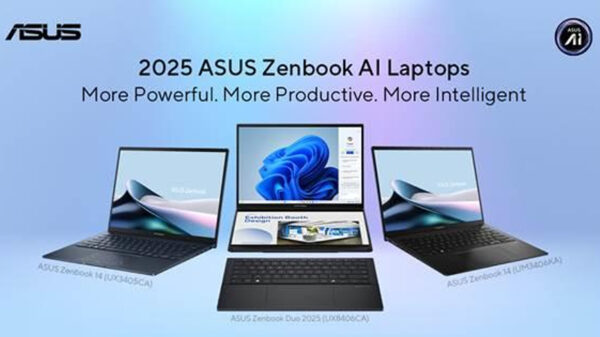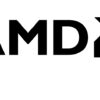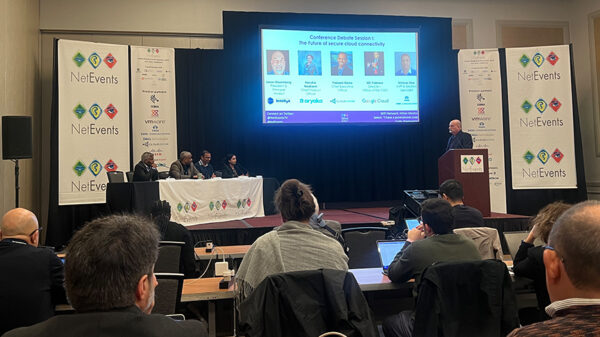By Guy Matthews
Editor, NetReporter
The world is shifting its applications and workloads to the cloud as never before. This migration embraces public cloud, private cloud, hybrid cloud and inter-cloud, all of which have to be connected by the right sort of network. It’s time to move on from old school legacy options. A multi-cloud environment demands a cloud-native approach.
Right now, the hottest topics in the world of enterprise-level connectivity are multi-cloud and cloud-native networking. Every CIO needs to formulate a strategy that takes account of important developments in these areas.
Scott Raynovich, Chief Technology Analyst with independent analyst firm Futuriom, has been tracking some of the trends in the cloud universe, and recently shared his findings with a panel of leading industry experts in a lively virtual group discussion: “We’re seeing the great cloud shift,” he noted. “It’s in the news every day, if you’re reading the business or the technology sections.”
Raynovich is not alone in identifying the disrupted nature of 2020 for much of the current focus on cloud, with restrictions on travel and restrictions on physical presence driving a need for remote access to vital applications and data. “This has highlighted a shift that was already going on towards the cloud,” he points out. “I called it the phase two transition to the cloud where more and more enterprises and organizations are moving applications into public cloud environments or shifting private cloud to public cloud. Zoom activity is going through the roof, with everybody using more online collaboration tools. Enterprises have gone from 80% physical presence to 20% physical presence, or less. This is highlighting the need for a flexible and elastic cloud infrastructure.”

In a complex, multi-cloud, hybrid cloud world, we need network solutions to match. Raynovich argues for a more dynamic, software-defined networking approach, based on open technologies and interoperability at the level of the API.
“You need network-as-a-service, and you want to look outwards not inwards at other clouds and applications,” he argues. “A cloud-native model is much more software driven. It offers a much more dynamic way to create networks, with no need to talk to a service provider about an MPLS circuit that’s going to be there for the next three years. You are configuring the network on the fly with software, which is important as we build these multi-cloud networks.”

“Customers are looking for the operating models that they are used to in the cloud to be brought on prem, and everywhere else,” notes Vijoy Pandey, VP & CTO, Cloud, Cisco “They’re looking for application and service connectivity awareness, which means they want their infrastructure to be aware of all the applications that sit above it.”
Pandey also identifies a shift to edge compute, involving mobile devices and other sorts of computing elements, with centralized cloud data centres now just one entity in a whole continuum of compute capabilities. Cloud-native connectivity, he says, is about connecting all of these things together.
“We are moving from bare metal applications to virtual machines, and from monolithic infrastructure and monolithic apps to composable apps and micro services,” he adds. “Networks must connect the mobile edge, and cloud-native connectivity must connect cloud-native services.”
Metcalfe’s law says the value of the network is proportional to the square of the number of users, reminds Galeal Zino, Founder & CEO, NetFoundry: “Now we need a new law around distributed applications,” he adds. “It should state that the value of the network is now also proportional to the square of the number of distributed applications. This is not only on the user side, with mobile and edge and IoT, but also the back end of the applications – microservices from multiple parties across multiple clouds and across multiple administrative domains. Our job is to make the network as agile and flexible as that application environment.”
The vision of Amir Khan, President, CEO & Founder, Alkira, is slightly different: “We see that public cloud and private cloud environments are providing an opportunity to create a completely flexible environment which is consumed similarly to how applications are consumed in the infrastructure,” he explains. “You need a completely elastic environment which is highly available, and which is on demand as a service, so that you can deploy your network globally in minutes and provision it in minutes, and manage and create a secure perimeter around your infrastructure.”
Zino of NetFoundry notes that modern networks are now software, in particular cloud-orchestrated software: “The new edge is the application itself,” he says. “It’s about the ability of the network to be embedded into that application in a way that the application can spawn multiple environments, edge, cloud and so on. The challenge for us and other next gen cloud native networking providers is to abstract that for the customer and to make it simple.”
Raynovich points to a cloud-native survey that Futuriom has recently conducted: “We talked to 150 communications cloud enterprise network operators and IT specialists, professionals and practitioners in the field,” he says. “We wanted to find out what multi-cloud networking represented in the minds of users.”

“Our customers have one way of doing things on prem in their data centres, and they have different ways of doing things across multiple clouds,” comments Khan of Alkira. “Some are struggling with adopting a multi cloud environment, so we need to have seamless connectivity between the on prem and multiple cloud environments.”
Networking has to enable innovation and agility, says NetFoundry’s Zino: “It needs to be more like a platform for use across all networking use cases. Agility is the number one requirement we hear from customers, and number two is security. The answer is to be secure by design with zero trust security. Anything else is too reactive, too slow and too expensive. AI and ML are taking decisions based on a predicted state. Imagine trying to keep up in that type of world with firewalls and reactive ‘day two’ security measures.”
For a business, what matters is how quickly they can develop their apps, argues Pandey of Cisco: “The experience behind developing that app is also critical,” he continues. “Nobody wants to adopt and manage their own cloud-native networking solution. But unfortunately what’s happening is a plethora of solutions. There’s complexity there and people are struggling with that. We need a seamless developer experience where somebody who’s trying to build a line of business app can pick and choose the services they need.”
So has the term ‘cloud-native networking’ yet achieved wide recognition as an industry category? After all, there are a lot of networking vendors that would call themselves vendors of cloud solutions but does that necessarily make them cloud native?
“Cloud native networking and its definition will vary, but I think at the heart of the definition is what are we trying to enable,” believes Zino of NetFoundry. “It’s agility, it’s simplicity, it’s innovation, it’s security, it’s performance. When we say cloud native, we’re talking about making networking as simple and powerful as the cloud providers have done for compute. We’re talking about that same paradigm, but for networking. Go and spin up a secure high-performance network as simply and powerfully as you can spin up cloud computing.”
Just because you might sit on a cloud doesn’t make you cloud native, agree Pandey of Cisco: “I think we should be clear about that. And I’m not just talking about networking, I’m talking about applications, I’m talking about infrastructure in general, a VM sitting on a cloud infrastructure is not cloud native. Cloud native networking is a network that connects various components together, that connects API endpoints, service endpoints, microservices – all of these cloud native components together.”
Amir Khan, President, CEO & Founder, Alkira said: “We like looking at the use cases of customers, and what the customer needs,” says Khan of Alkira. “Our ultimate focus is on what the customer’s requirements are. When you are building an infrastructure which caters to their needs, which is a platform for networking, which is simple to consume literally in minutes, you should be able to seamlessly connect all the this infrastructure together. You need to offer a solution, which is very clearly defined. So as long as you build a platform which caters to the needs of the customers and is very simple to deploy and consume, customers are going to be happy.”



















































































































